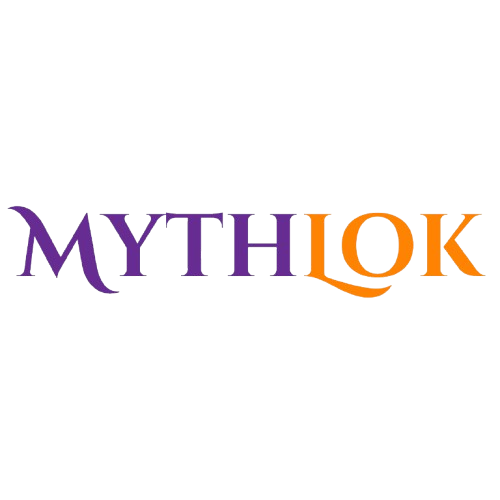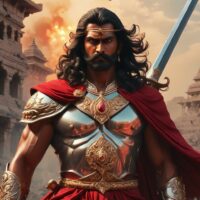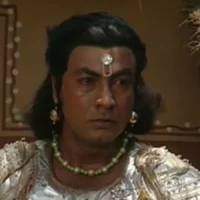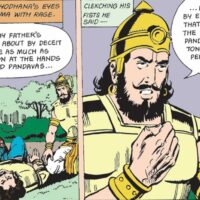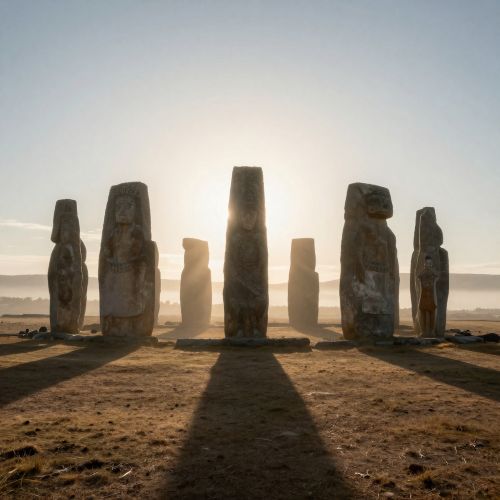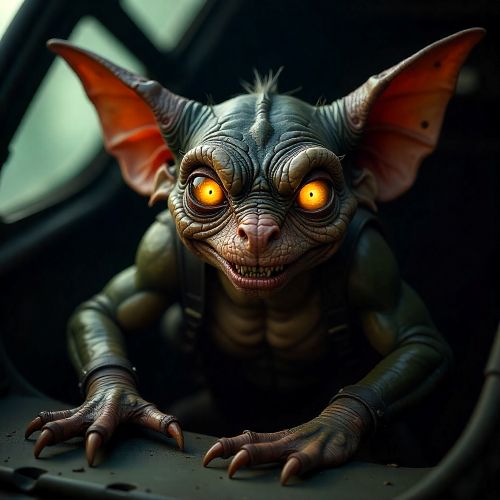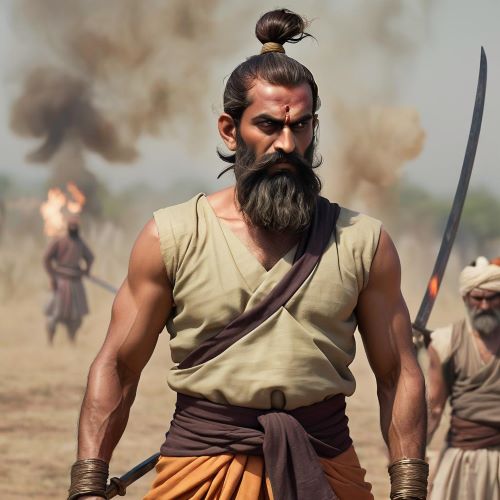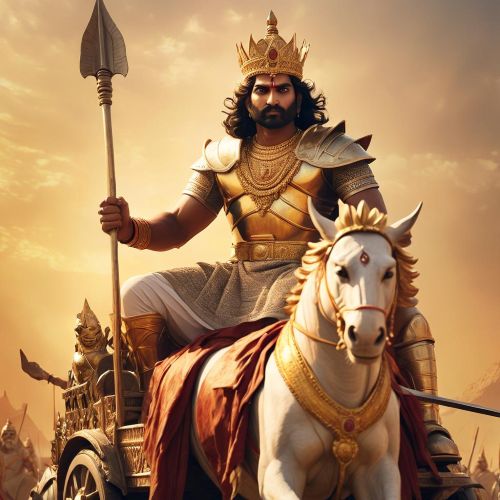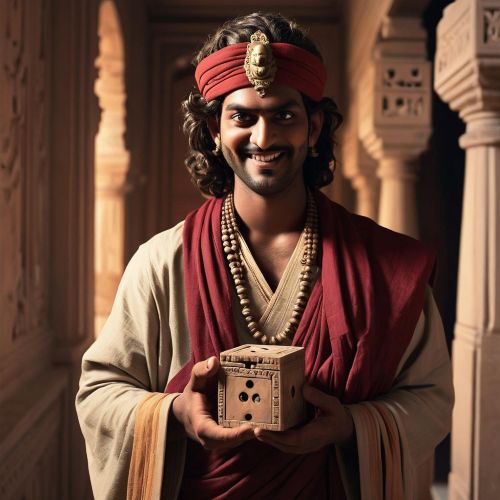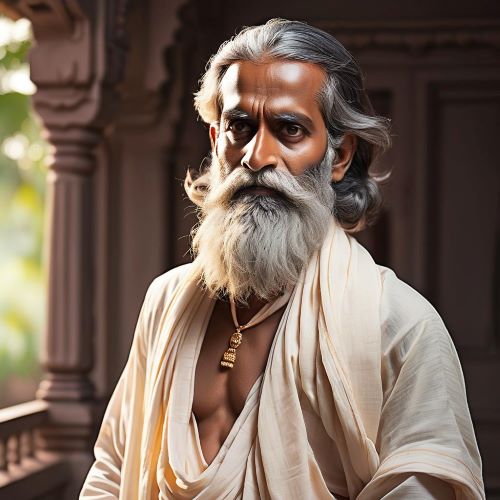Ashwathama : The Cursed Immortal Warrior of Mahabharata
Listen
At a glance
| Description | |
|---|---|
| Origin | Indian Mythology |
| Classification | Mortals |
| Family Members | Dronacharya (Father), Kripi (Mother) |
| Region | India |
| Associated With | Immortality, Battle |
Ashwatthama
Introduction
Ashwatthama, a prominent figure in Indian mythology, particularly in the Mahabharata, is known for his valiance, wisdom, and tragic fate. As the son of Guru Dronacharya, one of the greatest warriors and teachers of the era, Ashwatthama was destined for greatness. He played a key role in the epic battle of Kurukshetra, revered and feared for his indestructibility and the curse that shaped his destiny. His name is synonymous with valor, vengeance, and an unending curse, embodying the complexities of human emotions and divine interventions. Also known as Drauni, Ashwatthama’s story continues to resonate with audiences today as a central figure in the epic tale of war and duty.
Physical Traits
Detailed descriptions of Ashwatthama’s physical appearance are scarce in the Mahabharata. However, based on scattered references, he is often depicted as a tall and well-built warrior with a fierce gaze, reflecting his unwavering loyalty to the Kauravas. His name, “Ashwatthama,” translates to “having the voice of a horse,” suggesting a powerful and resonant voice that commanded attention on the battlefield. He was born with a divine gem on his forehead, granting him extraordinary abilities and near invincibility. This gem, known as the “Mani,” protected him from hunger, thirst, fatigue, old age, diseases, weapons, and even deities. His birth was marked by a cry resembling that of a horse, leading to his name. Ashwatthama’s physical strength and endurance were unparalleled, and he possessed an aura that commanded respect and fear. The gem played a crucial role in his life and legacy.
Family
Ashwatthama’s lineage is deeply rooted in the Mahabharata. He is the son of Drona, the revered archery teacher who trained both the Pandavas and the Kauravas, and Kripi, a skilled warrior and Drona’s wife. His grandfather was the sage Bharadwaja, a prominent figure within the Brahmin caste. This heritage placed Ashwatthama at the intersection of the battlefield and scholarly realms. Although born a Brahmin, Ashwatthama pursued the life of a warrior. His noble lineage included his pious mother, Kripi, and his father, Dronacharya, a respected and revered figure. Despite his esteemed background, Ashwatthama’s life was fraught with challenges that tested his character and resolve. Drona’s severe penance to please Lord Shiva resulted in Ashwatthama’s birth, symbolizing a blend of divine valor and human struggle. Born in a forest cave, Ashwatthama faced hardships despite his distinguished lineage.
Other names
Ashwatthama is known by various names that reflect his lineage and attributes. “Dronaputra” and “Guruputra” denote his identity as the son of Dronacharya, the revered teacher of both the Pandavas and the Kauravas. Another name, “KripiKumara,” emphasizes his connection to his mother, Kripi. He is also commonly referred to as “Drauni,” a name derived from his father’s, Drona. “Bharadwaja” highlights his belonging to the Bharadwaja gotra (lineage), underlining his esteemed Brahmin heritage.
In addition to these lineage-based names, Ashwatthama has other monikers that capture his complex persona. “Vyathit” signifies his restless and troubled nature, especially following the events of the Kurukshetra war. Perhaps most strikingly, the name “Rakshasa,” meaning “demon,” was given to him by Krishna after his brutal actions during the war, reflecting how his deeds were perceived by others. These names collectively illustrate the multifaceted character of Ashwatthama, encapsulating his role in the epic narrative and the enduring impact of his legacy.
Powers and Abilities
Ashwatthama, trained by his father Drona, mastered various secrets and divine weapons during his education alongside the princes. Among these were the Narayanastra, a potent celestial weapon capable of immense destruction, and the Brahmastra, a divine missile of unparalleled power. Additionally, he wielded the Brahmashirastra, an even more formidable weapon. As a Maharathi, Ashwatthama was recognized as a warrior capable of single-handedly facing thousands, showcasing his exceptional skill in both physical combat and the use of these deadly armaments. His command over these celestial weapons made him a formidable force on the battlefield of Kurukshetra.
However, Ashwatthama’s prowess and immortality came at a cost. Following a heinous act driven by vengeance during the war, where he unleashed the Narayanastra indiscriminately, he was cursed by Lord Krishna. This curse bestowed upon him eternal life, condemning him to wander the earth burdened by loneliness and despair. Stripped of his invincibility and marked by the infamous night raid on the Pandava camp, where he committed atrocities against sleeping warriors, including women and children, Ashwatthama’s legacy became marred by his tragic fall from grace and the weight of his actions.
Krishna, enraged by Ashwatthama’s actions, inflicts upon him the curse of immortality. This punishment becomes a source of immense suffering for Ashwathaama. He witnesses the world change around him, loved ones die, and civilizations rise and fall, all while being unable to find solace in death. Some versions of the Mahabharata suggest Ashwatthama finds redemption by eventually meeting Krishna in his final incarnation as Kalki, the prophesied destroyer of evil. However, the core of his story remains a cautionary tale, highlighting the dangers of unchecked rage and the weight of choices made in the heat of battle.
Modern Day Influence
Ashwatthama’s story remains a compelling narrative in modern times, serving as a poignant reflection on the repercussions of ambition, vengeance, and the ethical quandaries faced by warriors. His tale is a recurring theme in Indian literature, television, and cinema, portraying him as a complex figure embodying both virtues and flaws. In contemporary discourse, Ashwatthama symbolizes themes of immortality and the burdens it entails, featuring prominently in literary works and popular media as a symbol of eternal suffering and the quest for redemption. Local folklore in some regions of India even speaks of sightings of Ashwatthama, believed to wander the earth under the weight of his curse, adding to the mystique surrounding his character.
Ashwatthama’s legend endures as one of the seven Chiranjeevis (immortals) in Hindu mythology, a status granted after Lord Krishna cursed him for his actions during the Kurukshetra War. His immortality and the consequences of his deeds continue to captivate audiences, influencing artistic interpretations that explore themes of vengeance, immortality, and the moral complexities of wielding great power. His story provides a profound narrative backdrop for contemplating justice, revenge, and the moral responsibilities inherent in positions of authority, resonating deeply with ongoing ethical and philosophical debates about human nature and divine justice.
Related Images
Sources
Ganguli, K. M. (Trans.). (1883–1896). The Mahabharata of Krishna-Dwaipayana Vyasa. Sacred-texts.com. https://www.sacred-texts.com/hin/m01/index.htm
Debroy, B. (Trans.). (2010–2014). The Mahabharata (Vols. 1–10). Penguin Books.
Dutt, M. N. (Trans.). (1905). The Mahabharata. Elysium Press. https://archive.org/details/mahabharata_english_mn_dutt
Hiltebeitel, A. (2001). Rethinking the Mahabharata: A Reader’s Guide to the Education of the Dharma King. University of Chicago Press.
Doniger, W. (2009). The Hindus: An Alternative History. Penguin Books.
Bhattacharya, N. (1996). The Mahabharata and the Yugas: India’s Great Epic and the Hindu System of World Ages. SUNY Press.
VedicFeed. (2023). Ashwatthama – The Immortal Warrior of Mahabharata. https://vedicfeed.com/ashwatthama-the-immortal-warrior-of-mahabharata/
Wisdom Library. (2023). Ashvatthama: 20 definitions. https://www.wisdomlib.org/definition/ashvatthama
Gita Press. (n.d.). Shrimad Bhagavad Gita with Commentary. https://gitapress.org
Frequently Asked Questions
Who is Ashwathama in Indian mythology?
He is the immortal son of Dronacharya and a warrior from the Mahabharata, cursed to suffer forever.
Why was Ashwathama cursed?
He attacked the unborn child of Abhimanyu in revenge, causing Krishna to punish him with eternal suffering.
Is Ashwathama still alive today?
According to legends, he wanders the earth unseen, with many claiming strange encounters in India.
What makes Ashwathama unique?
He is one of the few immortals (Chiranjivis) whose immortality is a punishment instead of a blessing.
What does Ashwathama symbolize?
He represents uncontrolled rage, regret, and the long-lasting impact of destructive decisions.

